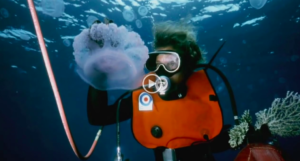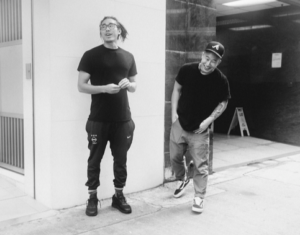Alexander Nemerov is currently a professor and chair in the Department of Art and Art History at Stanford University. Nemerov is a former chair of the Department of the History of Art at Yale University, where he received his doctorate and master’s degrees in art history. He is also on the board of the Solomon R. Guggenheim Foundation, has published several art history books, has curated exhibits at museums such as the Smithsonian Museum of American Art in Washington, DC., and is nephew to the renowned late American photographer Diane (Nemerov) Arbus. LitMag interviewed Nemerov about his current work and thoughts on art and art history.
Audrey Kalman: Having chaired departments both at Stanford and Yale (Art and Art History and History of Art, respectively), have you observed differences in how art is studied in different regions?
Alexander Nemerov: My feeling is that, on campus, the study of art is taken more seriously at Yale than at Stanford. Although both places attract wonderful art history students who do impressive work, and although graduates of both schools go on to do Ph.D. work in art history, the feeling at Stanford—by and large, for the undergraduates on the whole campus—is that the humanities are adornments to life and do not compare to the seriousness and money-making prestige and power of entrepreneurship, computer science, etc. At Yale—although most students do not study art history—the humanities are accepted as an important part of one’s education and indeed one’s life.

AK: What drew you to your recent work on a monograph on Ralph Eugene Meatyard’s work?
AN: I was encouraged to do the Meatyard project by Jeffrey Fraenkel, owner of Fraenkel Gallery downtown. Not having known much about Meatyard before, I welcomed the opportunity to challenge myself, challenge my preconceptions, about what a good photograph is and how to write about it.
AK: What do you think is the appropriate level of exposure to art and art history for high schoolers?
AN: I think a good one-year AP art history course would be great for high school students. My impression of these AP courses, however, is that the teachers often conceive them as a “name-the-monument” long march rather than an introduction to *how* to look and *why* to look at the art.
AK: You have curated exhibits containing works from the eighteenth through twentieth centuries; do you think curating these different types of works requires a varied or more or less the same skill set?
AN: I think curating shows requires a sensitivity to space and to the particular objects on display. So yes a large 18th-century painting might command space differently than a tiny photograph made in 1911. The curator responds, sensing what the art requires of him or her; even as the curator also imposes their own vision.
Interview by Audrey Kalman






